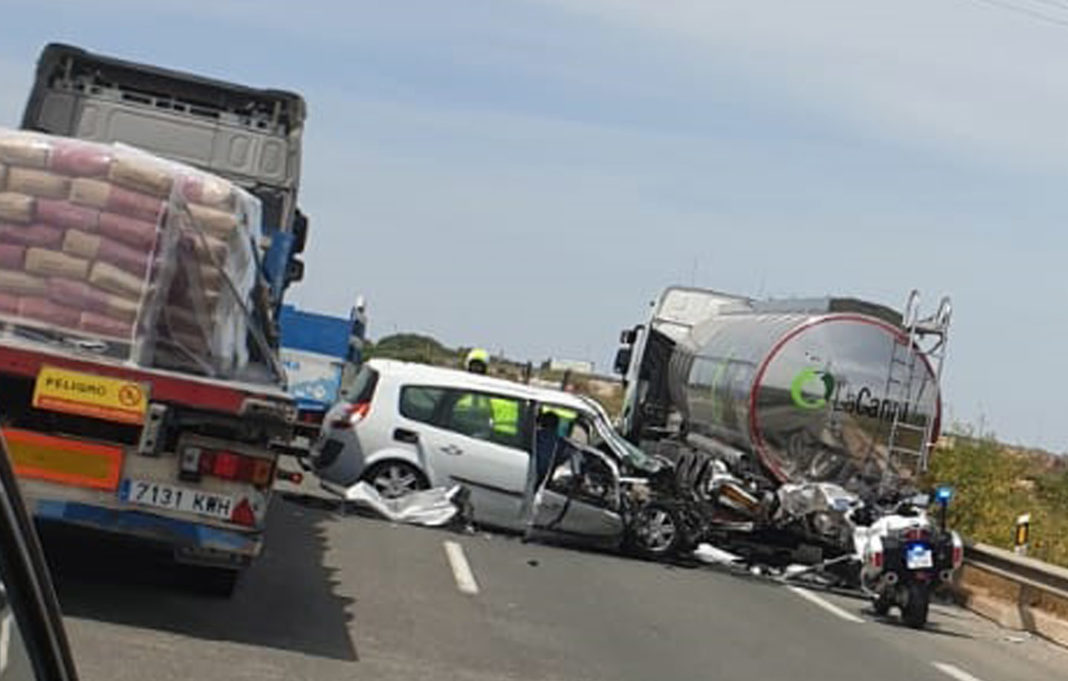In 2022, there were 1,042 fatal incidents on Spanish roads in which 1,145 people died and another 4,008 were seriously injured. These figures represent 44 more deaths (+4%) and 425 fewer serious injuries (-10%) than in 2019, the reference year and prior to the pandemic.
The Minister of the Interior, Fernando Grande-Marlaska, has indicated, in the presentation of the provisional balance of road incidents 2022, that “it is time to analyse the figures and continue working to tackle the causes, reduce deaths and also contribute to raising awareness among citizens about the drama of road accidents and their painful consequences”.
In his speech, Grande-Marlaska thanked the joint efforts of the whole of society in recent years “which has made Spain an international benchmark in road safety”, with incident figures “significantly below” the average for the countries in the European Union, but has called for prudence and responsibility to continue improving. “Statistics continue to show us too many deaths and too many serious injuries on the road. A lot of suffering that could be avoided,” he added.
The minister was accompanied at the presentation, held at the headquarters of the Directorate General for Traffic, in Madrid, by the Undersecretary of the Ministry of the Interior, Isabel Goicoechea; the general secretary of the General Directorate of Traffic, María Lidón Lozano; and by the chief general of the Traffic Group of the Guardia Civil, José Ignacio Criado, among other authorities.
Mobility, fleet and driver census
In terms of mobility, during the past year 439.8 million long-distance movements by road were registered, which is 3% more than those made in 2019 (427.1 million).
The vehicle fleet has increased by 3.6% compared to 2019, reaching 35.6 million vehicles, and the driver census has increased by 0.82%, up to 27.5 million drivers.
Radiography of incidents by type of road
Conventional roads continue to be the ones that register the most deaths. Compared to 2019, deaths on conventional roads increased more (+5%) than on motorways and dual carriageways (+3%).
833 people died in traffic incidents on conventional roads (73%) and 312 on motorways and dual carriageways (27%), so that out of every 4 fatalities, 3 are on conventional roads and 1 on motorways and dual carriageways.
By type of incident
Leaving the road accounts for almost half of the deaths (42%). Deaths from this typology have increased by 13% compared to those registered in 2019.
By user type
The trend of recent years has changed. In 2022, vulnerable deaths have been reduced by 5% and deaths in cars have increased by 10%.
In the global calculation, 422 vulnerable users have died, 22 fewer than in 2019. This decrease has occurred significantly in motorcyclists, with 251 deaths, 35 fewer than in 2019.
Pedestrian fatalities increase, 126 in 2022 compared to 118 in 2019, which means that 1 in 10 fatalities on the road were pedestrians.
– More than half of the deaths were on highways and dual carriageways (58, five more than in 2019).
– More than 3 out of 10 deaths on these expressways died when they got out of the vehicle.
– Only 8 of the 126 pedestrians killed were wearing reflective clothing.
Deceased cyclists increase. In total, there have been 44 dead bicycle users, 4 more than in 2019.
By age
The greatest decreases in deaths by age group occurred in the groups from 25 to 34 years old, with a decrease of 11%, and from 45 to 54 years old, with a reduction of 9%. The age group that increases the most is that of 55 to 64 years, with 197 deaths, 23% more than in 2019 (160).
By day of the week
56% of deaths are registered on a working day (641 fatalities), days in which a greater increase in mobility is also observed (+4%).
Security accessories
142 people traveling in cars and vans (25%) were not wearing seat belts at the time of the incident. Nor did 9 cyclists and 5 motorcyclists use helmets.
By autonomous communities
Deaths increased in Castilla y León (+40), Andalusia (+25), Castilla-La Mancha (+15), Region of Murcia (+9), Aragón (+7), Comunidad Foral de Navarra (+5), Cantabria (+4), Galicia (+1) and the Canary Islands (+1). They descend in the Community of Madrid (-20), Catalonia (-18) and the Basque Country (-13), La Rioja (-6), Extremadura (-6), and the Valencian Community (-1).
The figures presented this Monday by the Minister of the Interior are provisional and refer only to fatal incidents that occurred on interurban roads and victims registered up to 24 hours after the incident occurred. The definitive and consolidated figures, which will include the victims of incidents that occurred in urban and interurban roads after 30 days, will allow us to have a complete x-ray of road incidents in Spain.





